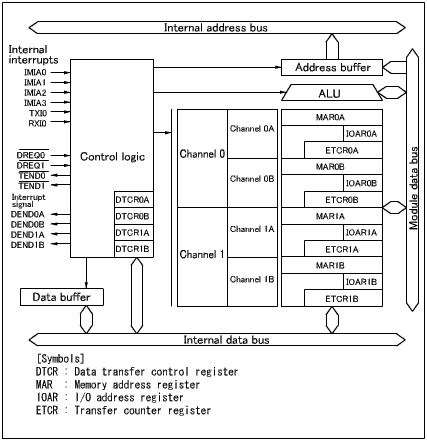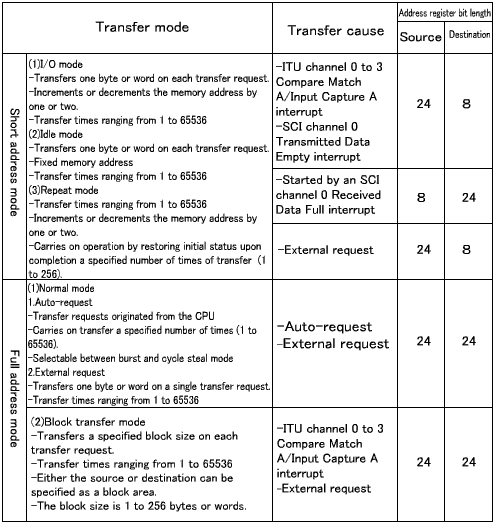| 1. DMAC
Overview
The DMAC is a facility that allows data to be transferred at
high speed. It is rarely used alone but is more commonly used in
conjunction with an I/O device that requires high-speed data transfer.
Typical applications of the DMAC, for example, might include high-speed
data transmission over SCI and high-speed pulse input/output coupled with
a timer.
- The H8/3048 supports a DMAC that allows data to be transferred from memory
to memory, from memory to I/O, and from I/O to memory.
- The DMAC provides up to four channels of data transfer.
- The DMAC can be started from the CPU, external pins, ITU, and SCI.
Figure 1 is a block diagram of the DMAC.
 |
| Figure 1 DMAC block diagram |
The DMAC has two modes in which to specify a source and a destination.
(1) Short address mode
The DMAC runs as a four-channel (channels 0A/0B/1A/1B) DMAC.
It provides DMA transfer to and from a memory space (including a built-in
peripheral) capable of accessing the entire memory space of 16M bytes by
8-bit absolute addressing.
The DMAC can be configured to increment or decrement the memory
address on each data transfer request, but the space capable of access
by 8-bit absolute addressing can neither be incremented nor decremented.
Normally, a register located in the I/O register is specified.
In short address mode, DMA transfer requests initiated by interrupts
originating from the ITU/SCI can be accepted.
(2) Full address mode
The DMAC is used as a two-channel (channels 0/1) DMAC.
It allows memory-to-memory data transfer. It can be configured to
increment or decrement the memory address or leave it fixed. Block
transfers can be specified.
Table 1 summarizes the functions of the DMAC.
| Table 1 DMAC functions |
 |
|

![]()

![]()